|
Displaying items by tag: Jackson Pollack
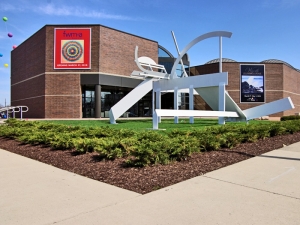
Between 1938 and his death in 1956, G. David Thompson, a steel tycoon and passionate art collector made a number of sizable donations to his alma mater, Peru High School in Indiana. Thompson’s generous gifts were in honor of his art teacher, John Whittenberger, who inspired the former troublemaker to change and his ways and helped set him on the path that led to his eventual success.
Thompson graduated from Peru High School in 1913 and established his own investment banking company in Pittsburgh during the Great Depression. By 1945, he was at the helm of four steel companies in the city. With ample funds, Thompson became a fervent art collector, often buying works by unknown artists who went on to become quite established. His multi-million dollar collection included works by Paul Klee (1879-1940), Georges Braque (1882-1963), Claude Monet (1840-1926), Henri Matisse (1869-1954), Jackson Pollack (1912-1956), Piet Mondrian (1872-1944), Paul Cézanne (1839-1906), Vincent van Gogh (1853-1890), Alberto Giacometti (1901-1966), and Edgar Degas (1834-1917).
While Thompson made a number of donations to major museums, he ultimately gifted 75 paintings and prints, one sculpture, and 54 pieces of oriental pottery to Peru High School. The exhibition Hidden Treasures: The John Whittenberger Collection of G. David Thompson at Peru High School at the Fort Wayne Museum of Art features a portion of the dozens of works Thompson sent to Whittenberger. Works on view include pieces by William Merritt Chase (1849-1916), Salvador Dalí (1904-1989), and Pablo Picasso (1881-1973). Hidden Treasures is on view through February 24, 2013.
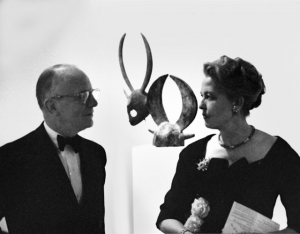
Designed by Renzo Piano, the museum that houses the collection of John de Menil and Dominique de Menil opened to the public 25 years ago. A sold-out gala is being held tonight, November 29, to celebrate. The fete has raised $2.2 million, exceeding its $1.5 million goal. This is only the third gala held by the Menil Collection as the institution already boasts an endowment of approximately $200 million thanks to support from the board, donors, and corporate sponsors.
The theme of the night will be “Celebration in Blue,” a tribute to Yves Klein, an important figure in post-war European art and a personal friend of the Menils. Among the 700 guests will be Pablo Picasso’s grandson, Bernard Ruiz-Picasso, philanthropist Agnes Gund, president emerita of the Museum of Modern Art, and hedge fund chief John D. Arnold.
A silent auction will also be held at the gala. The 31 lots include works by Ed Ruscha, Olafur Eliasson, and Richard Serra. Proceeds will support operations and exhibitions. The museum plans to expand their contemporary art collection and hope to build the Menil Drawing Institute to house and exhibit modern and contemporary works.
The free museum features over 15,000 paintings, sculptures, prints, drawings, photographs, and rare books from the 20th century, all of which were once part of the Menils extensive private art holdings. Included in the impressive collection are works by Paul Cezanne, Mark Rothko, Andy Warhol, Rene Magritte, Max Ernst, Henri Matisse, Pablo Picasso, and Jackson Pollack.
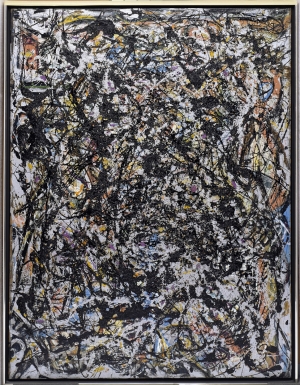
In the 1970s a coat of varnish obscured Sea Change (1947), an important work by Jackson Pollack that signaled his transition famous drip technique. The Seattle Museum of Art has tackled the restoration of Sea Change, which is a cornerstone of the institution’s collection.
Efforts appear to be going well as reporters and photographers were invited to the museum on Tuesday, November 27, to see the progress firsthand. Led by the museum’s chief conservator, Nicholas Dorman, the undertaking is complicated due to the multiple types of media used by Pollack and the sheer depth of the painting’s surface. Measuring approximately 4 x 5 feet, Sea Change consists of many layers including several types of paint (oil, house and commercial, early acrylic), a white oil base, aluminum paint drips, and imbedded gravel.
In order to preserve the original painting, Dorman had to become as familiar as possible with the work underneath the layer of old varnish. He carefully studied old X-rays of the painting as well as photographs of Pollack at work in order to learn more about the composition itself.
Bank of America’s Art Conservation Project is funding the restoration work on Sea Change. Launched in 2010, the initiative has provided about $2 million to the conservation of art and artifacts of cultural and historical value around the world.
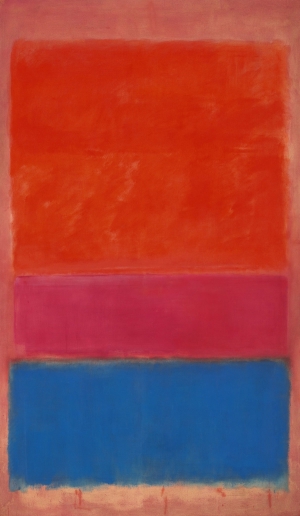
The Contemporary art auction that took place at Sotheby’s Tuesday night made up for any disappointment stemming from last week’s Impressionist and modern art sale. Profits from the Contemporary sale reached $375.1, the highest total for any auction in Sotheby’s history. The previous record of $362 million was set in May of 2008.
The biggest sale of the night, Mark Rothko’s No. 1 (Royal Red and Blue) (1954) stirred up some competition and ended up selling to a telephone bidder for $75.1 million after the auction house’s fees. Other impressive sales included Jackson Pollack’s Number 4, 1951 that brought $40.4 million with fees, a record for the artist, and Francis Bacon’s Untitled (Pope) (1954) that sold for $29.7 million with fees. A number of high-quality works on paper by Andy Warhol also sold well. Green Disaster (Green Disaster Twice) (1963) sold to newsprint tycoon, Peter Brant, for $15.2 million and Suicide sold to the Manhattan art dealer, Philippe Ségalot, for $16.3 million, a record for a Warhol work on paper.
Out of 69 works offered at the auction, only 11 went unsold.
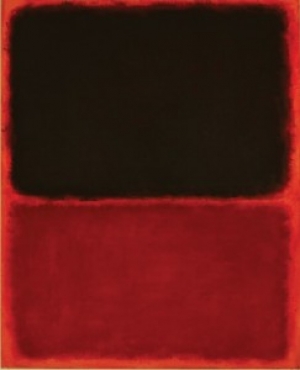
Domenico De Sole, chairman of the fashion powerhouse, Tom Ford International, is suing Michael Hammer, chairman of the disgraced Knoedler Gallery. De Sole and his wife, Eleanore, claim that Hammer sold the couple a fake Mark Rothko (1903–1970) painting (Untitled, 1956) for $8.3 million back in 2004. The allegation against Hammer is an amendment to a lawsuit that was originally filed against Knoedler on March 28.
De Sole’s suit is one of three against Knoedler and its former director, Ann Freedman. The suits all claim that Knoedler Gallery knowingly sold counterfeits. Between the three cases, the plaintiffs are seeking more than $70 million in damages.
Knoedler closed on November 30, 2011 after 165 years in the art world. A claim that the gallery sold a fake Jackson Pollack (1912–1956) painting for $17 million was the reason for Knoedler’s abrupt departure.
In addition to Hammer, the De Sole suit has introduced three new defendants to the ongoing Rothko/Knoedler case. Glafira Rosales, a Long Island art dealer who consigned artworks to Knoedler is newly involved as is as Jaime Andrade, a former Knoedler employee who introduced Rosales to the gallery. Jose Carlos Bergantinos Diaz, Rosales companion and business partner has also been added to the suit.
When Knoedler sold Untitled, 1956 to the De Soles, Freedman claimed that a Swiss collector had bought it directly from Rothko, and after the collector’s death, Knoedler was responsible for selling the work on his son’s behalf. The gallery had bought the painting from Rosales a year earlier for $950,000 and relied on her work about the painting’s provenance. Suspicions arose after Knoedler Gallery closed amidst the Pollack scandal and the De Soles’ lawyers hire a forensic conservator who found the painting’s marks and composition were inconsistent with Rothko’s technique.
When was the last time an expert from a top auction house dispensed with longtime allegiances and joined forces with someone from the enemy camp? In the fiercely competitive world of Sotheby’s and Christie’s, such an occurrence is rarer than a prized Vermeer.
But for months now there have been rumors that a new powerhouse partnership was in the works, one that would replace Giraud, Pissarro, Ségalot, the superprivate superdealer that pulled off so many big transactions and whose business began winding down soon after Franck Giraud, one of its partners, announced that he was leaving to “explore options inside the art world and out.”
The players making up this new venture, however, had been something of a guessing game.
The now-shuttered Knoedler & Co. gallery, which is the subject of several lawsuits charging it sold fakes, will sell nearly three dozen works from its remaining inventory at auction this fall.
Thirty-four pieces of art from the gallery’s inventory that include works by Robert Rauschenberg, Helen Frankenthaler, Jules Olitski, Milton Avery, and Walker Evans, are scheduled to be auctioned off by Doyle New York on Nov. 13, said Harold Porcher, vice-president and director of modern contemporary art at Doyle.
Jackson Pollock’s mistress Ruth Kligman said she watched him paint it, as a love token, just before his fatal 1956 car crash. But the Pollock-Krasner Authentication Board, whose members were close with Pollock’s wife, Lee Krasner, have questioned its authenticity. Pollock, Kligman, and Krasner are all now dead, but as Red, Black & Silver heads to auction, on the 100th anniversary of Pollock’s birth, Lesley M. M. Blume chronicles the dramatic ongoing battle over what may have been an American master’s last canvas.
The imagery on the canvas is relatively spare: a black oblong shape resides at the picture’s center, encircled by a loose knot of swirling red lines. It’s a small painting, just 24 by 20 inches. There is nothing to indicate that this unassuming, unsigned work has been the subject of an explosive, decades-long battle, a saga that has drawn in some of America’s best-known artists and the power brokers of the art world.
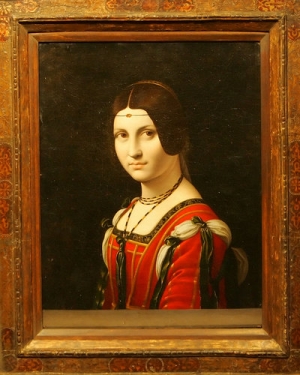
Federal District Court Judge Paul G. Gardephe’s résumé includes many impressive accomplishments but not an art history degree. Nonetheless he has been asked to answer a question on which even pre-eminent art experts cannot agree: Are three reputed masterworks of Modernism genuine or fake.
Judge Gardephe’s situation is not unique. Although there are no statistics on whether such cases are increasing, lawyers agree that as art prices rise, so does the temptation to turn to the courts to settle disputes over authenticity. One result is that judges and juries with no background in art can frequently be asked to arbitrate among experts who have devoted their lives to parsing a brush stroke.
The three cases on Judge Gardephe’s docket in Manhattan were brought by patrons of the now-defunct Knoedler & Company who charge that the Upper East Side gallery and its former president Ann Freedman duped them into spending millions of dollars on forgeries.
The judge’s rulings may ultimately rely more on the intricacies of contract law than on determinations of authenticity. But the defendants and plaintiffs are busily assembling impressive rosters of artistic and forensic experts who hope to convince the judge that the works — purportedly by Jackson Pollock, Willem de Kooning and Mark Rothko — are clearly originals or obvious fakes.
Of course judges and juries routinely decide between competing experts. As Ronald D. Spencer, an art law specialist, put it, “A judge will rule on medical malpractice even if he doesn’t know how to take out a gallstone.” When it comes to questions of authenticity, however, lawyers note that the courts and the art world weigh evidence differently.
Judges and juries have been thrust into the role of courtroom connoisseur. Legal experts say that, in general, litigants seek a ruling from the bench when the arguments primarily concern matters of law; juries are more apt to be requested when facts are in dispute.
|
|
|
|
|